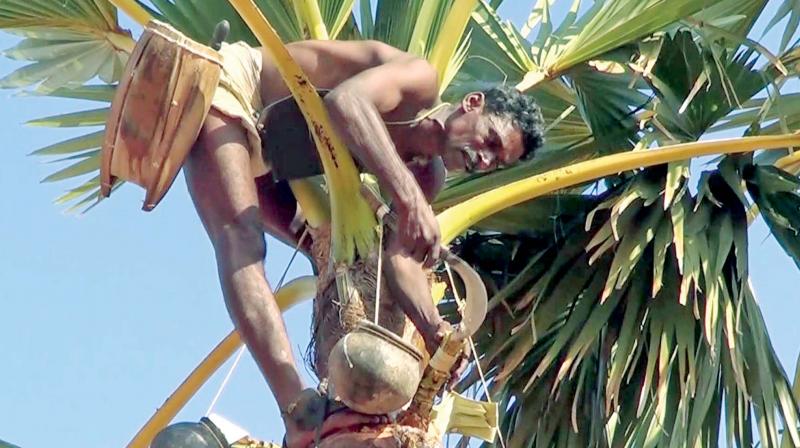Palm tree farmers in Ramnad in the doldrums
A luxuriant growth of palm trees is to be found in coastal Ramanathapuram, particularly in the Sayalkudi stretch.

Rameswaram: The palm tree and the amazing variety of uses it can be put for human benefit is nature’s wonder. A luxuriant growth of palm trees is to be found in coastal Ramanathapuram, particularly in the Sayalkudi stretch.
But palm tree growers/farmers in the district are today a highly distressed lot as their incomes have dwindled, prompting them to seek government support to give palm growers recognition as a ‘cottage industry’ to enable them have a foothold in what has been a traditional economy for decades in this district.
Interaction with a cross-section of palm tree workers and farmers in this belt shows that there could not be a greater utility value that could be obtained from a single species such as the palm trees, referred to as ‘Sorga Vriksham’ in Tamil, a plant species that confers all the ‘heavenly benefits’.
While palm leaves is used as roofing material for houses in this belt and also as a base for making handicrafts, palm fronds double up as natural fences for households. Palm trees bark is good wood material in construction of houses, even as ‘Padha Neer’ (‘Neera’) the drooping liquid collected in pots from ‘Paalai’ (spathe of the palm trees) makes for a healthy natural, relaxation drink, particularly the first falls collected in the early hours every day. It requires careful tending of the palm trees daily and regular clipping away by palm tree workers.
Again the collected ‘Padha Neer’ when subjected to simple heating, refining and filtering, yields tasty palm jaggery and palm sugar, which are considered much more healthy than the refined white sugar that people in urban areas have got so much used to. “All these are very useful products,” aver Kuppichai and Sivagomathy, two palm tree workers in Sayalkudi area.
As people more and more realize the beneficial health effects of ‘natural sugars’ like palm jaggery and palm sugar, the demand for them is growing, but the laborious, continuous process of production and recovery of these products is not economically remunerative, they rued.
Despite better demand for palm jaggery and palm sugar, traditional workers have quit this field to better paying jobs.
The palm tree based economics roughly works like this: With average rainfall in the district declining, the yield of ‘Padha Neer’ (‘Neera’ or sweet toddy from palm trees) has also been falling, they said. On an average, one pot yields three to five litres a day per tree. To maintain economies of scale, palm workers to extract 25 litres will need to climb an average of ten trees a day. Then boling the 25 litres of ‘Neera’ extracted could yield up to five-kg of palm jaggery/sugar a day, while the procurement price now in the market for one-kg of palm jaggery/sugar (Karupatti) is `140 per kg. At the end of the day if a palm tree worker is able to earn `700, it barely covers his costs including labour for minimum of two workers per tree. “This is hardly remunerative for us and the traditional palm industry cannot survive unless government supports us substantially,” the palm workers urged.

